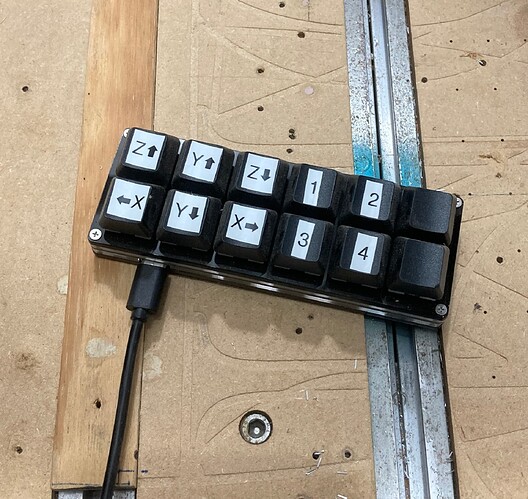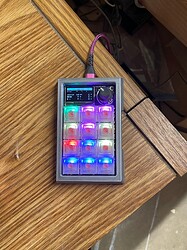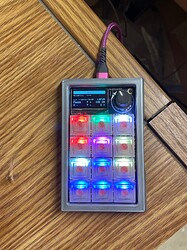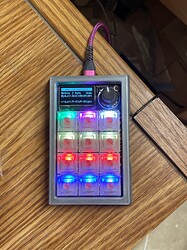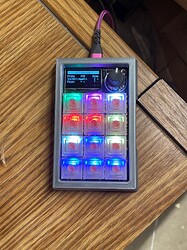Has anyone used something like this and if so how did it work?
It’s “just” a keyboard analogue.
I’ve been using:
because I like mechanical key switches.
A numeric keypad works as well — see the keyboard shortcuts:
I just use a Rii mini keypad.
1234 = Jog speed
Upper right directional pad = X and Y
PgUp/PgDn = Z
Rii Mini Wireless Bluetooth Keyboard with Touchpad, Support Bluetooth +(RF) 2.4GHz Wireless Connection for Smartphones, PC, Tablet, Laptop TV Box iOS Android Windows Mac.Black Amazon.com
I use an 8-BitDo bluetooth mini-gaming controller with my Rpi. It would be nice to figure out a way to customize button assignments, but it works like a charm even without.
Here’s a link to a post where I discuss what I use:
I use this one as well.
Hey @Tod1d, do you happen to have a link for this $15 keypad?
I use this cheap $15 mouse/keypad combo, since it’s in the shop and exposed to all the dust etc… works great and cheap to replace, although it’s been fine for over a year
Here’s the one I have…
I use Adafruit’s MacroPad. It allows me to have custom configurations depending on what I am doing on the CNC (laser, rapid movement, jogging, general cnc). And customized color-coding of the key layouts. Not super cheap ($50) but pretty reasonable in my opinion for what it does!
All i use is a mini wirkess keyboard
Me too. I have a USB version of the keypad. Works just fine
It would be great if we could attach a jog pendant directly to the machine. The latency added by having a computer in the middle can be a bit annoying. But that would require a controller with a relatively modern firmware.
If you did that then moves would be outside of the knowledge of CM wouldn’t they? Or is that info really stored on the board and reported to CM?
Essentially, both. The size of the usable area is store in the controller, and the controller knows where the tool is currently located. There’s even settings to raise an error if the machine unexpectedly encounters a limit switch (hard limit error) or is commanded to move outside its usable area (soft limit error). Though IIRC Carbide 3D has them disabled by default, instead relying on Carbide Motion to ensure it doesn’t crash.
The controller knows where it last sent the tool. It doesn’t know if made it, or if it drifted off course. (Open loop system).
True, but the same is true of the computer.
Edit: Though a reasonably sophisticated controller has the ability to monitor motor current draw and can detect when a motor skips a step. Not as good as a closed-loop system, but still good at detecting issues like crashes.
I’ve been using the Rii mini kepyad for a few years now on 5 different Shapeoko machines with fairly weak Windows tablets. Haven’t had a single issue with latency unless the tablet has something hogging resources like the 11th Windows update for that week. ![]() I’m not a competitive gamer when jogging my machine, so a few milliseconds of latency hasn’t been noticeable. I would like a nice pendant with a jog wheel too, but for $30, a keypad does a hell of a job of jogging and allowing me to enter in text on a tablet.
I’m not a competitive gamer when jogging my machine, so a few milliseconds of latency hasn’t been noticeable. I would like a nice pendant with a jog wheel too, but for $30, a keypad does a hell of a job of jogging and allowing me to enter in text on a tablet.
They could use a different controller, but that would add cost. They’ve chosen to add a lot of value in the mechanicals on a US made machine. Adding something like a Masso would add ~$3k to the cost. I like that route rather than cheaping out on the mechanicals.
Surprisingly, it could potentially be (slightly) cheaper. The Shapeoko 5 Pro contains a second, much more powerful microcontroller, but they just have it acting as a serial adapter.
